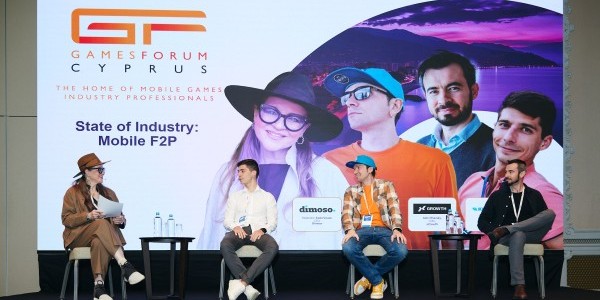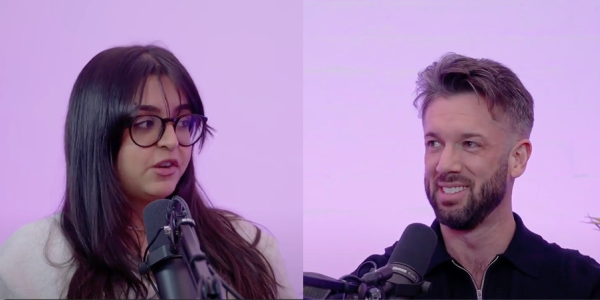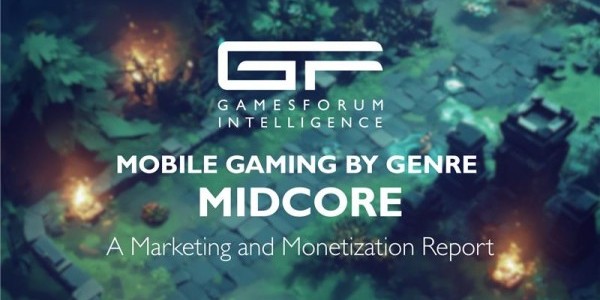Top Tips: All the Key Takeaways from Gamesforum Barcelona 2025

Bigger, bolder, and more influential than ever, Gamesforum Barcelona 2025 brought together 550 senior gaming professionals for two days of networking, expert-led insights by 100+ speakers, and cutting-edge strategies pertaining to UA, ad mon and product growth, at Barcelona's InterContinental Hotel.
At the event, some of the smartest minds in the mobile gaming business revealed what’s actually working right now, and where the industry is headed. Retargeting is no longer optional, ad monetization needs smarter execution, alternative growth channels are emerging fast, and much more.
Read on for key insights and expert tips from the event to refine your mobile gaming strategy for 2025 and beyond.
Your Ad Monetization Strategy is Killing Your Retention and Here’s How to Fix It
Developers are stuck in a lose-lose battle between maximizing ad revenue and keeping players engaged. Too many ads kill retention, but without them, monetization collapses. The real problem? Bad ad placement, poor timing, and competitor ads stealing your players.
One of the biggest fixes is adjusting ad formats, not just reducing frequency. “Don’t limit ad length; manipulate the skip time instead,” said Eric Keen, Head of Analytics at Supersolid, in his keynote, explaining how subtle tweaks to ad mechanics can keep players from churning. Another takeaway? Reduce the number of clicks required to close an ad. “Reducing the number of clicks needed to close an ad can significantly decrease frustration,” another speaker noted.
But what about competitor ads? Too many games are losing players directly to rivals because their ad networks aren’t properly filtered. “We analyzed iOS and Android revenue shares and blocked problematic apps - but the list still didn’t cover all competitors.” The solution? Take ad-blocking seriously and “Proactively block problematic ad categories: politics, religion, sexually suggestive content, firearms, and supplements.”
2025 is the year developers finally fix ad monetization - or watch their retention collapse.
Retargeting is No Longer Optional - It’s the Only Way to Win
Most mobile game developers still focus too much on user acquisition and not enough on keeping the players they already have. The numbers prove it: retargeting is no longer an experiment—it’s the most effective way to drive revenue and retention.
“Games that use retargeting have a higher ratio of paying users,” Vera Manhoso, Gaming Account Director at RTB House, explained, highlighting how re-engaging existing users is far cheaper than finding new ones. The data is even more shocking: “298% YoY increase in paid retargeting shows its growing effectiveness.”
Still think using multiple retargeting partners will just drive up costs? Think again. “The myth that multiple retargeters compete for the same users is false. Each DSP has unique strengths,” said one panelist, explaining how different partners optimize for different audience segments. “One partner might optimize for non-payers, another for whales - it’s about segmentation.”
If you aren’t running an aggressive retargeting strategy in 2025, you’re leaving money on the table.
Bidding-Only Waterfalls Are a Lie - Hybrid Models Are Crushing Them
Bidding-only waterfalls were supposed to increase efficiency and transparency, but real-world tests tell a different story. Many developers have already seen eCPMs drop by 40% or more, proving that this model isn’t the magic solution ad networks promised.
“Bidding-only models caused a -44% drop in eCPM and only a marginal increase in impression volume,” explained Bruno Balistrieri, Senior Ad Mon Analyst at Kwalee, during his keynote. The solution? Hybrid waterfalls still outperform bidding-only setups. “Mediations are pushing publishers toward bidding-only, but we need to keep testing.”
The best strategy going forward? Automate your waterfall adjustments. “Instead of choosing one approach, automate your waterfall adjustments based on real-time data,” advised a speaker, showing how dynamic, data-driven optimization is the real key to sustainable ad revenue.
In 2025, sticking with bidding-only models is a mistake, if you're not adapting to hybrid waterfalls you will be left behind.
LiveOps is the Ultimate Revenue Driver - But Only If You Do It Right
LiveOps is no longer just about event-driven engagement - it’s one of the most powerful monetization levers in mobile gaming. But the developers who win in 2025 won’t just be running basic events. They’ll be combining predictable events, FOMO-driven engagement, and special limited-time content into a cohesive strategy.
“Three pillars of LiveOps: predictable events, FOMO-driven irregular events, and major special occasions,” explained Dylan Tredrea, Advisor, revealing how layered engagement cycles keep players coming back. Personalization is also proving to be a game-changer: “Customizable offers make players feel more in control, increasing conversion rates.”
And then there’s IP collaborations - but not the boring ones. The biggest brands are getting weird with their partnerships—and it’s working. “Puzzle & Dragons x Hello Kitty? Stumble Guys x Barbie? These ‘weird’ IP collabs drive huge revenue spikes," “In three years, such collaborations will be the norm, not the exception.”
The mobile gaming industry is witnessing a significant transformation, with a pronounced "shift from launching to scaling" as developers focus on maximizing revenue rather than introducing new titles. This shift is evident in the increasing importance of LiveOps, which enhances player lifetime value (LTV) through ongoing engagement. According to panelists on the 'LiveOp Trends of 2024' panel, "there are fewer successful newcomers entering the top-grossing" charts, emphasizing that sustaining revenue through personalization and LiveOps strategies is now a more viable path to profitability than relying on new game launches. Furthermore, "iAP revenue growth is much faster than downloads growth," suggesting that developers are prioritizing monetization from existing players rather than acquiring new users. These patterns underscore the necessity for game studios to adapt, leveraging LiveOps to maintain player retention and drive long-term financial success.
LiveOps is no longer just a feature - it’s your core growth strategy.
Influencer Marketing is Now a Science - Not a Guessing Game
Gone are the days when influencer marketing was an experiment. The best mobile game marketers in 2025 are using a structured, data-driven approach—and they’re scaling it like never before.
The first rule? Start small and iterate. “Start with nano & micro influencers, gather insights, then scale to mid-size and mega influencers,” advised Marion Balinoff, Influencer Marketing Consultant, during her Influencer Marketing Testing Framework keynote. The second rule? Use incentives. “Gift codes and giveaways increase conversion rates by 186% on average.”
The biggest takeaway? Custom in-game integrations are the secret weapon. “The highest-performing campaigns combined in-game integrations with custom influencer content,” one speaker revealed. The numbers speak for themselves: 279% increase in influencer marketing ROI for brands that do it right.
Influencer marketing in 2025 isn’t about luck, it’s about strategy and execution.
Custom Store Listings and Product Pages Are Transforming Mobile UA Strategies
The implementation of Custom Store Listings and Custom Product Pages is becoming a critical tool for mobile game developers seeking to optimize user acquisition and app store optimization. According to Sebastian Lüdemann, UA & Marketing Consultant and Founder of User Acquisition SL GmbH, CSLs and CPPs serve as "the eye of the needle to diversify and harmonize the acquisition funnel at the same time for Hybrid Games". By leveraging these tools, developers can execute "multidimensional segmentation of the audiences along revenue streams, optimization types & goals, and creative strategies," allowing for more precise targeting. Additionally, CSLs enable strategic differentiation based on factors like country, churned users, and keyword optimization, while CPPs enhance ad-to-store conversion efficiency. This approach not only refines audience segmentation but also extends the lifespan of high-performing creatives through A/B testing. As mobile gaming monetization grows increasingly competitive, integrating CSLs and CPPs is proving to be an essential strategy for driving sustained UA growth and engagement.
Alternative Growth Channels Like Telegram Are the Next Big UA Advantage
Paid UA costs are skyrocketing, but smart developers are shifting their growth strategies to alternative platforms like Telegram. With 40% YoY growth, Telegram is becoming an underrated acquisition channel that developers can use for community building, viral growth, and lower-cost conversions.
“For $985 spent on AdsGram, we got 19,731 users. On Facebook, we spent $1,401 and only got 2,471 users,” shared Ramiz Trtovac, Head of UA at GameBiz Consulting, demonstrating how Telegram’s cost per user can be 4X cheaper than traditional social ad platforms.
But it’s not just about installs - it’s about building engaged communities before launch. “The primary objective should not be to increase the number of app installations, but rather to establish a community surrounding your project,” explained a speaker, highlighting how this strategy creates long-term retention, rather than just short-term bursts of traffic.
In 2025, Telegram and alternative channels will be the secret weapon for UA teams willing to experiment.
Privacy-First Ad Monetization is Becoming Mandatory
Regulations are tightening worldwide, and games that ignore privacy compliance will see their ad revenue tank. Developers who invest in first-party data strategies and consent management will gain an edge over competitors struggling with ad targeting restrictions.
“Ad revenue may suffer as advertisers typically bid lower for non-targeted impressions,” warned Kim Skovgaards, Ad Tech Specialist, Usercentrics CMP Product Team, explaining how privacy-first advertising is now directly impacting eCPMs and ROAS. The key? Proper consent management and better first-party data collection.
Some studios are already seeing major benefits from these privacy-focused approaches. “Ads LTV increase across multiple games: 10-15%,” noted one case study, proving that privacy compliance isn’t just a legal necessity - it’s a business advantage. In 2025, the games that thrive will be the ones that make privacy a strategic asset.










